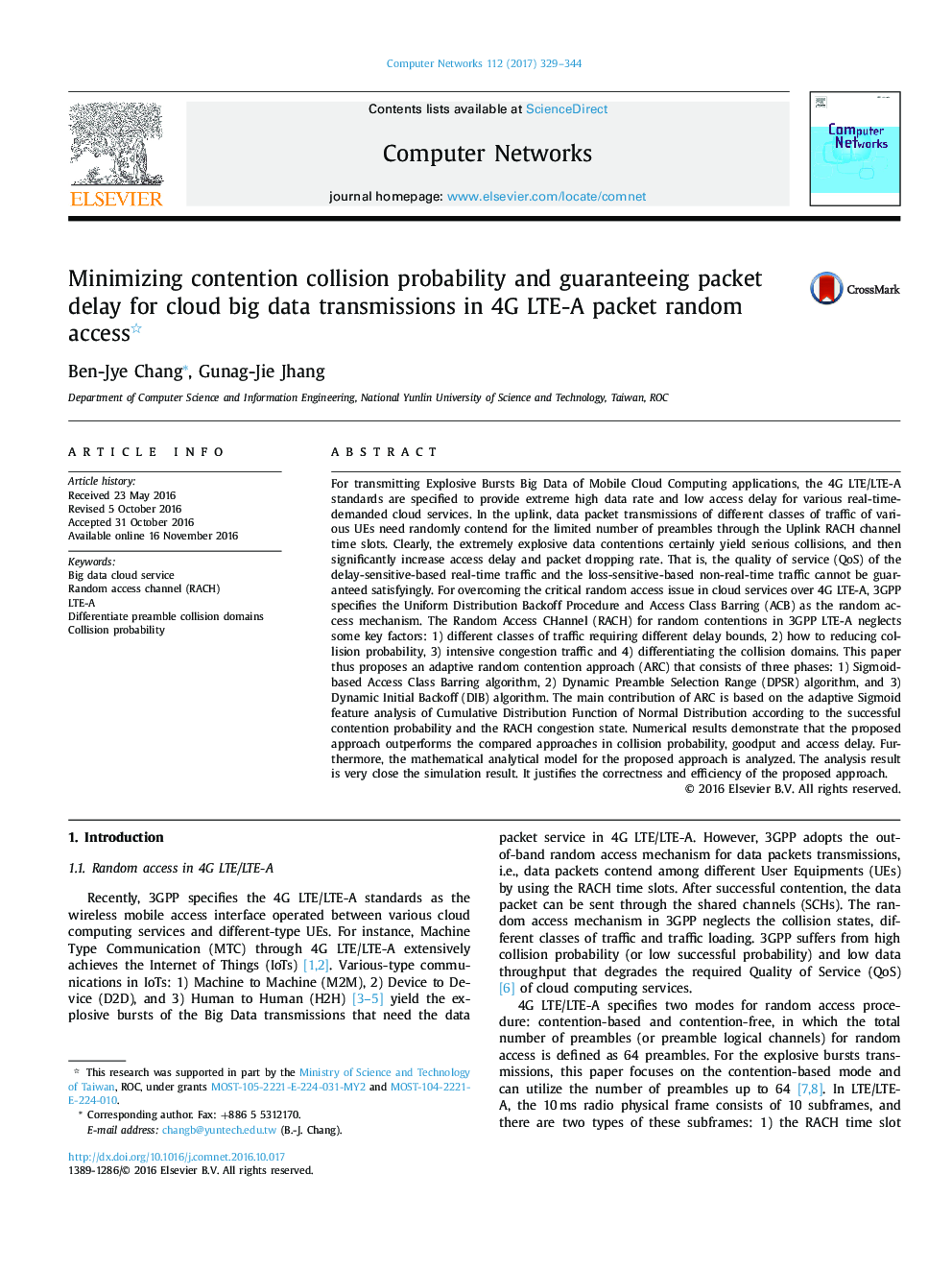| Article ID | Journal | Published Year | Pages | File Type |
|---|---|---|---|---|
| 4954856 | Computer Networks | 2017 | 16 Pages |
For transmitting Explosive Bursts Big Data of Mobile Cloud Computing applications, the 4G LTE/LTE-A standards are specified to provide extreme high data rate and low access delay for various real-time-demanded cloud services. In the uplink, data packet transmissions of different classes of traffic of various UEs need randomly contend for the limited number of preambles through the Uplink RACH channel time slots. Clearly, the extremely explosive data contentions certainly yield serious collisions, and then significantly increase access delay and packet dropping rate. That is, the quality of service (QoS) of the delay-sensitive-based real-time traffic and the loss-sensitive-based non-real-time traffic cannot be guaranteed satisfyingly. For overcoming the critical random access issue in cloud services over 4G LTE-A, 3GPP specifies the Uniform Distribution Backoff Procedure and Access Class Barring (ACB) as the random access mechanism. The Random Access CHannel (RACH) for random contentions in 3GPP LTE-A neglects some key factors: 1) different classes of traffic requiring different delay bounds, 2) how to reducing collision probability, 3) intensive congestion traffic and 4) differentiating the collision domains. This paper thus proposes an adaptive random contention approach (ARC) that consists of three phases: 1) Sigmoid-based Access Class Barring algorithm, 2) Dynamic Preamble Selection Range (DPSR) algorithm, and 3) Dynamic Initial Backoff (DIB) algorithm. The main contribution of ARC is based on the adaptive Sigmoid feature analysis of Cumulative Distribution Function of Normal Distribution according to the successful contention probability and the RACH congestion state. Numerical results demonstrate that the proposed approach outperforms the compared approaches in collision probability, goodput and access delay. Furthermore, the mathematical analytical model for the proposed approach is analyzed. The analysis result is very close the simulation result. It justifies the correctness and efficiency of the proposed approach.
